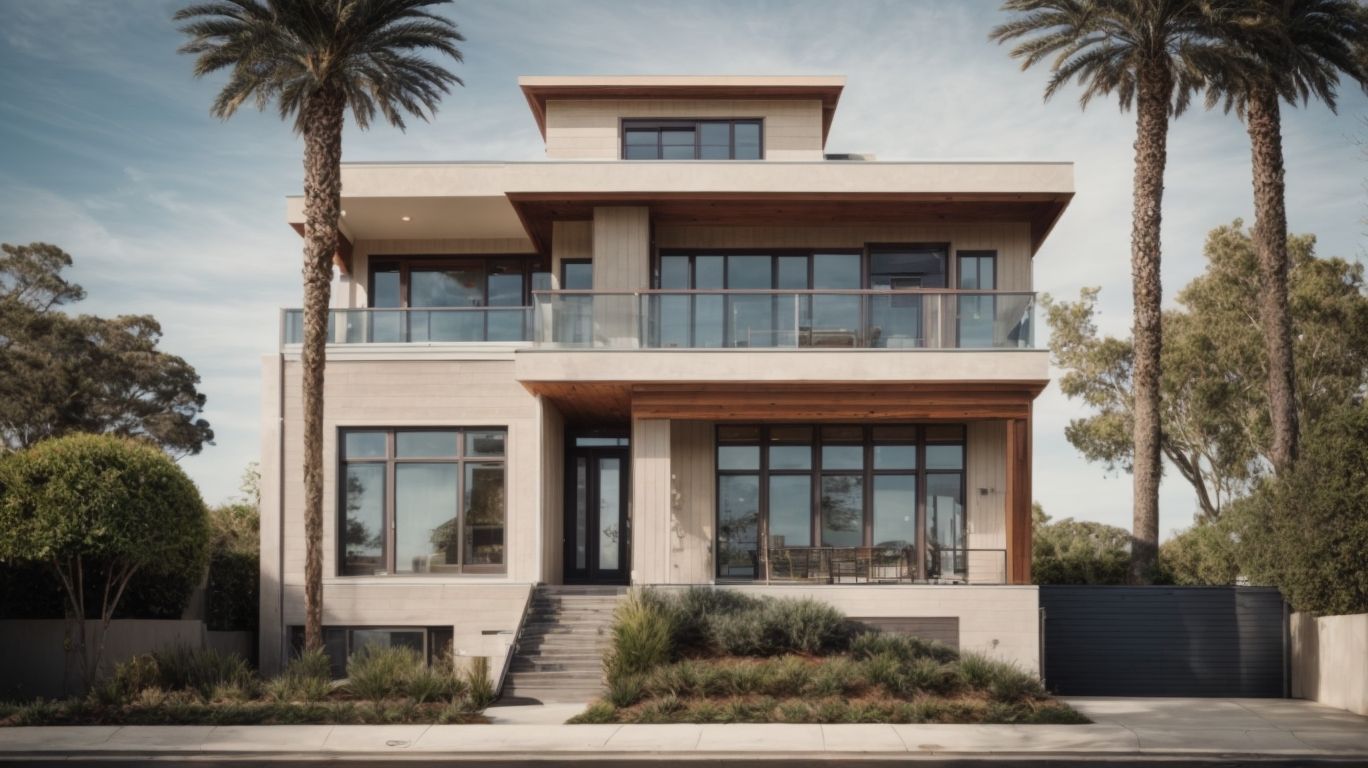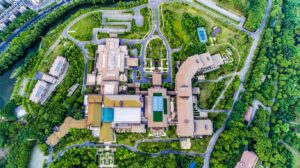
Navigating the Costs of Adding a Second Story in the Bay Area: Budgeting, Saving, and Planning
Are you considering adding a second story to your home in the Bay Area? If so, you may be wondering about the average cost, key expenses, and how to budget for such a project.
From legal requirements and design considerations to the pros and cons of adding a second story, there are many factors to consider.
In this article, we will explore the cost of adding a second story in the Bay Area, as well as tips for saving money and successfully navigating the process. Let’s dive in!
What Is the Average Cost of Adding a Second Story in the Bay Area?
When considering the average cost of adding a second story in the Bay Area, it’s essential to account for various factors that can significantly impact the total expenses.
- Material costs in the region tend to be higher due to the demand for quality and sustainable building materials that align with the area’s eco-friendly ethos.
- Labor costs are also influenced by the competitive construction market in the Bay Area, where skilled workers are in high demand.
- Architectural design plays a crucial role in costs, as intricate and innovative designs that comply with local regulations and seismic requirements can add to the overall budget.
These factors, combined with the unique housing market trends and construction requirements of the Bay Area, contribute to the higher average costs associated with second-story additions in this region.
What Factors Affect the Cost of Adding a Second Story?
Several key factors influence the cost of adding a second story in the Bay Area, including material costs, labor expenses, architectural design complexity, and the overall housing market conditions.
The quality of materials chosen for the construction can significantly impact the budget, with premium options leading to higher costs but potentially offering more durability and aesthetic appeal.
Availability of skilled labor in the region also plays a crucial role, as a shortage can lead to increased labor expenses.
The intricacy of the architectural design, such as custom features or structural modifications, can add to the overall project cost.
Market dynamics, such as fluctuations in demand for housing and construction supplies, can further influence budget estimates for second-story additions.
How Can You Budget for Adding a Second Story in the Bay Area?
Creating a comprehensive budget for adding a second story in the Bay Area requires meticulous financial planning and accurate cost estimation to ensure the project stays within the set budget.
One essential budgeting strategy is to allocate funds wisely by prioritizing critical aspects of the project such as structural enhancements, materials, labor costs, permits, and unexpected expenses.
It is crucial to conduct thorough research to determine the average costs associated with second-story additions in the Bay Area, considering factors like permits, architectural designs, and contractor fees.
Establishing a contingency fund is vital to address any unforeseen circumstances that may arise during the project. By monitoring expenses closely and adjusting the budget as needed, homeowners can achieve a successful and cost-effective second-story addition.
What Are the Key Expenses to Consider?
When budgeting for a second-story addition in the Bay Area, it’s crucial to consider key expenses such as material costs, labor charges, furniture, fixtures, and appliances that contribute to the overall project budget.
- Material costs for a second-story addition often include structural materials like wood or steel, as well as finishing materials such as flooring and paint.
- Labor charges encompass the wages of carpenters, electricians, plumbers, and other professionals involved in the construction process.
Budgeting for furniture and fixtures is essential to ensure the space is functional and aesthetically pleasing. These expenses can significantly impact the total cost of the project, so careful planning and cost comparisons are vital to staying within budget.
How Can You Save Money on Your Second Story Addition?
Implementing cost-saving strategies is crucial when planning a second-story addition in the Bay Area to stay within budget constraints and optimize financial resources for the construction project.
Taking on a second-story addition project can quickly escalate costs, but with careful planning and strategic decision-making, there are several effective methods to save money. One key aspect is selecting cost-efficient materials that offer quality without breaking the bank. Negotiating labor costs can also make a significant impact on overall expenses. By exploring different construction practices that are budget-friendly, such as efficient design layouts and energy-saving features, homeowners can ensure that their second-story addition is completed within financial constraints.
What Are the Legal and Zoning Requirements for Adding a Second Story in the Bay Area?
Understanding the legal and zoning requirements for adding a second story in the Bay Area is crucial to ensure compliance with the permitting process and zoning regulations that govern property expansions.
When considering a second-story addition, property owners must be aware of the specific zoning restrictions in their area. Zoning laws dictate various aspects such as allowable building height, setback requirements, and the maximum floor area ratio permitted on a property.
Obtaining the necessary permits for a second-story addition involves submitting detailed plans to the local building department for review and approval. Compliance with building codes, environmental regulations, and safety standards is essential throughout the construction process to avoid potential legal issues.
What Permits Do You Need?
Securing the necessary permits is a critical step when adding a second story in the Bay Area, as adherence to building codes and regulatory requirements is essential for a smooth construction process.
These permits are not just documents to be filed away; they represent official approval from local authorities that your project meets safety standards and planning guidelines. Obtaining the required permits ensures that your second-story addition is structurally sound and complies with zoning regulations.
It’s important to note that failure to acquire the proper permits can result in costly fines, project delays, and even legal complications. Therefore, navigating the permitting process diligently and in accordance with local regulations is crucial for a successful and hassle-free construction experience.
Are There Any Restrictions or Limitations?
Zoning regulations and property value considerations may impose certain restrictions or limitations on adding a second story in the Bay Area, necessitating careful planning to navigate potential constraints.
Understanding how zoning regulations impact property values can help homeowners anticipate challenges when considering a second-story addition. By aligning architectural plans with local zoning laws and height restrictions, property owners can enhance their chances of gaining approval for their expansion projects.
Engaging with professionals familiar with local ordinances and building codes can aid in developing strategies to address zoning restrictions effectively. Conducting a thorough feasibility study to assess property constraints before embarking on a second-story addition can save time and resources in the long run.
What Are the Design Considerations for Adding a Second Story?
Careful attention to design considerations is paramount when adding a second story in the Bay Area, ensuring a harmonious blend of architectural design and structural integrity for the expanded living space.
Architectural aesthetics play a crucial role in transforming a one-story structure into a two-story dwelling. The exterior facade of the addition should complement the existing architectural style and proportions, maintaining a cohesive look. Elements such as windows, rooflines, and materials need to be carefully chosen to create a seamless transition between the old and new sections.
Structural soundness is equally vital, with proper reinforcement and support systems in place to ensure the stability and safety of the entire structure. By meticulously planning the design details, homeowners can achieve a successful integration of the second story, enhancing both functionality and visual appeal.
What Style and Layout Options Are Available?
Choosing the right style and layout options is crucial when adding a second story in the Bay Area, enabling homeowners to optimize space utilization and create a personalized living environment.
By exploring various architectural design choices, homeowners can achieve a seamless integration of the new second story with the existing structure. From modern and minimalist designs to traditional and rustic aesthetics, there are endless customization possibilities to suit different tastes and preferences.
Space planning techniques such as open floor layouts, strategic placement of windows for natural light, and innovative storage solutions play a vital role in maximizing functionality and enhancing the overall appeal of the added space. Each design style offers unique opportunities for creating a harmonious and functional living space tailored to the homeowner’s vision.
How Can You Maximize Space and Functionality?
Maximizing space and functionality is key to successful second-story additions in the Bay Area, where integrating smart design solutions and optimizing structural integrity enhance the overall living experience.
- By incorporating space-efficient layouts, such as open floor plans and modular furniture arrangements, one can create a seamless flow within the added space.
- Functional design elements like built-in storage solutions and multipurpose furniture help maximize every square foot.
Structural enhancements, like reinforced beams and proper insulation, not only ensure safety and comfort but also elevate the usability of the new living area.
- Balconies or rooftop decks can provide additional outdoor space while maintaining a compact footprint indoors, combining practicality with aesthetics in your home expansion project.
What Are the Pros and Cons of Adding a Second Story?
Adding a second story in the Bay Area presents various pros, such as increased property value and potential return on investment, but also comes with cons that should be carefully considered before embarking on the project.
One key advantage to adding a second story to your property is the significant boost it can offer to your overall property value. In areas like the Bay Area, where real estate is highly sought after, additional square footage and living space can elevate the allure and desirability of your home. This, in turn, can lead to a considerable increase in the resale value of your property, potentially offering lucrative returns on your initial investment.
It’s crucial to recognize that such additions also come with challenges, including high construction costs, potential zoning restrictions, and the disruption that a major renovation can bring to your daily life.
What Are the Benefits of Adding a Second Story?
The benefits of adding a second story in the Bay Area include increased property value, expanded living space, and the potential for accommodating growing family needs through thoughtful expansion projects.
These types of additions not only provide additional rooms for living space but can also significantly boost the overall value of your property. As the demand for larger living areas grows, the flexibility of second-story additions allows you to adapt to changing household dynamics without the hassle of moving. By creating more usable square footage, you are also enhancing the functionality and comfort of your home, making it a more desirable space for both your current and potential future needs.
What Are the Potential Challenges?
While adding a second story can offer significant benefits, challenges such as cost overruns and the need for contingency plans to address unforeseen issues can present hurdles during the construction process in the Bay Area.
One common issue that homeowners may encounter when undertaking a second-story addition project is the potential for construction delays. Delays can arise due to various factors, such as unexpected structural issues, permit delays, or adverse weather conditions. These delays not only extend the timeline of the project but can also lead to increased costs. Therefore, it is crucial for homeowners to work closely with their contractors to establish a realistic schedule and regularly communicate to proactively address any setbacks that may arise.
How Long Does It Take to Add a Second Story in the Bay Area?
The construction timeline for adding a second story in the Bay Area varies based on project scope, complexity, and regulatory procedures, with timelines typically ranging from several months to over a year for completion.
Numerous factors can influence the duration of such projects. Permitting processes, such as approvals from local authorities and adherence to building codes, play a crucial role in dictating timelines. Delays in obtaining permits can significantly extend the project timeline.
The intricacy of design plans, availability of materials, and the skill level of the construction team can all impact the speed at which the second-story addition takes shape. Meeting key construction milestones, such as framing, roofing, and finishing work, is vital for staying on track with the expected completion schedule.
What Are the Key Steps in the Process of Adding a Second Story?
Navigating the process of adding a second story in the Bay Area involves key steps such as planning and design, obtaining permits, demolition and construction, and finishing touches that require effective project management and clear communication throughout.
During the initial planning phase, it is crucial to work closely with architects and engineers to ensure that the design aligns with local building codes and regulations. Obtaining permits can be a time-consuming process, so staying organized and meticulous in documentation is essential. When it comes to demolition and construction, hiring experienced contractors and overseeing progress regularly helps maintain quality and efficiency. Clear communication between all parties involved is vital to address any issues promptly and keep the project on track.
Planning and Design
The initial phase of planning and design for adding a second story in the Bay Area involves critical decision-making on architectural design, layout preferences, and structural considerations that set the foundation for a successful expansion project.
During this crucial stage, homeowners typically work closely with architects and designers to clarify their vision for the new second story. It is essential to consider factors such as the overall aesthetic appeal, functionality, and practicality of the proposed design.
Architects may present various design options, ranging from modern and contemporary styles to more traditional and timeless looks, allowing homeowners to select the one that aligns best with their personal preferences. Structural engineers are also consulted to assess the existing foundation and determine the feasibility of the proposed design, ensuring it meets all safety and building code requirements.
Obtaining Permits
Securing the necessary permits is a crucial step in adding a second story in the Bay Area, involving compliance with zoning regulations, building codes, and regulatory requirements for construction projects.
This process ensures that the structure meets safety standards, neighborhood aesthetics, and environmental considerations. It is essential to engage with the local planning department to understand specific regulations and restrictions that apply to the property. By obtaining the required approvals beforehand, homeowners can avoid costly delays or legal issues during the construction phase. Compliance with permit procedures demonstrates a commitment to following established guidelines and contributing to the overall urban development plan.
Demolition and Construction
The demolition and construction phase of adding a second story in the Bay Area requires careful contractor selection, adherence to structural integrity standards, and efficient building practices to ensure a successful and safe building process.
During the demolition phase, it is crucial to work with contractors who have experience in handling such projects and are well-versed in the local building codes. This ensures that the process is carried out smoothly and in compliance with regulations.
When it comes to construction, focusing on structural integrity measures such as proper load-bearing support and foundation reinforcements is essential. By following best practices and employing skilled professionals, homeowners can mitigate risks and achieve a seamless transition to their new second-story addition.
Finishing and Interior Design
The finishing and interior design stage of adding a second story in the Bay Area involves selecting furniture, fixtures, and appliances to enhance the living space, creating a cohesive and aesthetically pleasing environment that reflects the homeowner’s preferences.
Carefully choosing furniture pieces that complement the overall theme of the home can significantly impact the ambiance of the second-story space. Opting for cozy yet stylish sofas, elegant dining sets, and custom-made cabinetry can add both functionality and visual appeal.
Fixture selections such as modern light fixtures, chic faucets, and decorative hardware can bring a touch of luxury to the newly constructed area. Installing high-end appliances that blend seamlessly with the design scheme not only elevates convenience but also enhances the overall living experience.
What Are Some Tips for Successfully Navigating the Costs of Adding a Second Story in the Bay Area?
Successfully managing the costs of adding a second story in the Bay Area requires strategic budgeting, meticulous financial planning, and proactive cost-saving measures to stay within budget constraints throughout the construction process.
One of the key tips for effective budget oversight during a second-story addition project is to break down your overall budget into specific categories such as materials, labor, permits, and unforeseen expenses, allowing you to track and control spending more efficiently.
Incorporating a buffer or contingency fund into your initial budget can help cover any unexpected costs that may arise. Maintaining open communication with your contractor and regularly reviewing project expenses can also aid in identifying potential cost-saving opportunities and adjustments to prevent budget overruns.




No Comments